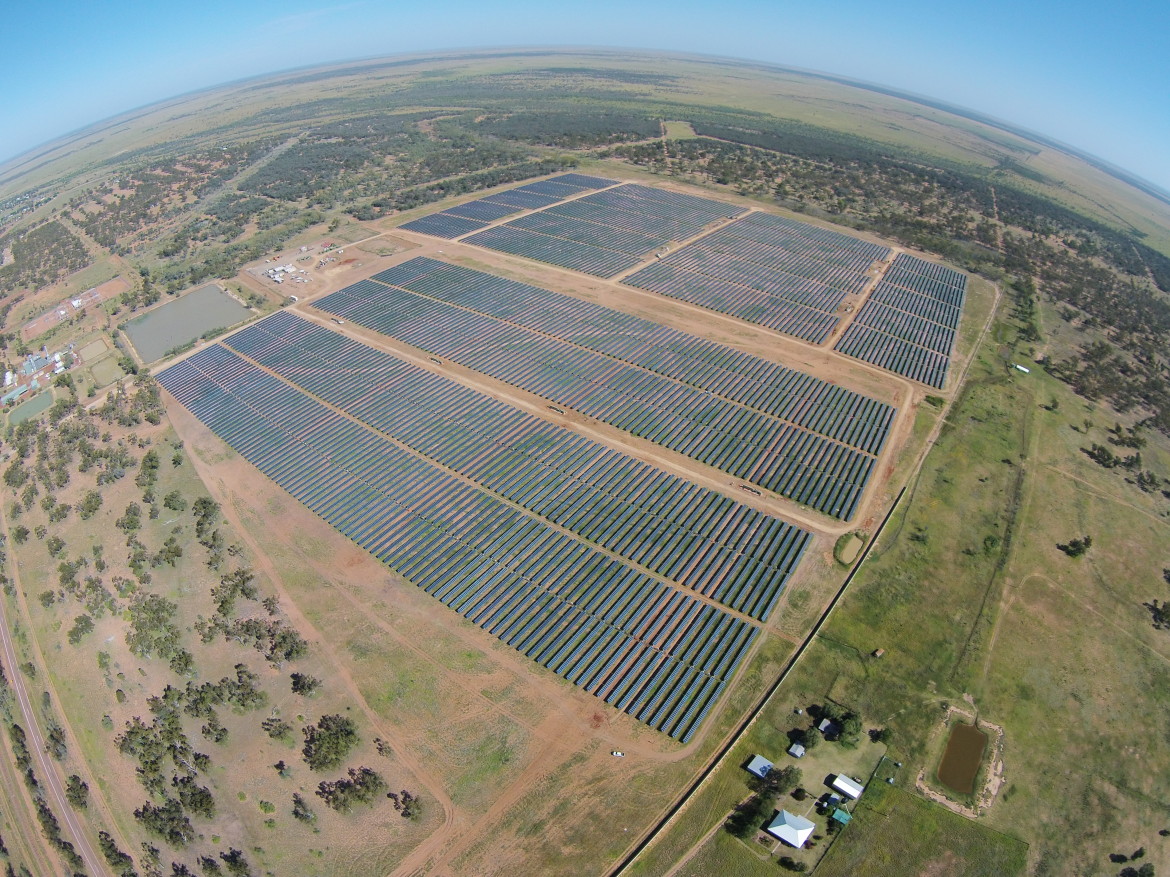With up to 15 GW of large-scale renewable energy projects in the pipeline, the clean energy future of coal-dependent regional Queensland looks secure.
A new report prepared by Green Energy Markets for Solar Citizens finds that the state’s renewable industry could expand sixfold, provided the government strengthens policy and support for the sector and thus ensure all planned projects are delivered.
“If all renewable energy power plants being considered for investment were to proceed, the sector would generate six times more jobs and economic benefits to the state – that’s $24 billion in investment, 34,000 construction jobs, 1,500 ongoing full-time jobs,” report author Tristan Edis says.

State of affairs, future prospects
The report titled Renewable Energy Across Queensland’s Regions shows there are currently 50 operational renewable energy projects and 27 under construction across the state. In addition, there are 69 planned renewable projects awaiting approvals and investment decisions, meaning they are at still risk of not going ahead.
“The vast majority of these projects will only proceed to construction if there is new government policy to encourage further carbon pollution reductions in the electricity sector or the closure of existing power plants,” the report says.
With an eye on increasing renewables output to 9,800 GWh by 2020, Queensland has seen a major surge in investment and processes put in place by the government in the period 2015-2018, including the 400 MW large-scale renewables and 100 MW energy storage tender called last October.
So, although only three years ago the Renewable Energy Target of 50% by 2030 looked as a very difficult task, it now appears within reach. Given what has been achieved in this three-year period, the remaining gap to 11,900 GWh is quite likely to be closed in a 12-year lead time.
In the short run, the benefits of late-stage projects for the regional economy are already knocking at the door.
“The renewable energy power stations built or committed to construction in Queensland since 2015 will deliver $4.2 billion in investment with 5,687 construction and 273 ongoing full-time jobs,“ Edis says.
While a quarter of Queensland’s electricity will come from renewables by 2020 – with the state’s solar and wind farms estimated to be achieving levels of energy generation 20% to 50% greater than international standards, the report finds that the additional 14,867 MW of proposed new renewable projects could cover over 90% of Queensland’s electricity needs in 2030.

Rooftop solar boom
The report also confirms that Queensland is on track to install close to the government’s capacity target of 3 GW of rooftop solar by 2020, although the number of systems – at around 666,000 – falls short of its one million target.
Overall, with 550,000 rooftop solar systems, Queensland is leading the charge among the states, followed by New South Wales and Victoria.

In terms of savings, the report finds that Queensland homes with solar save on average $720 per year on electricity bills, and businesses an average of $3,000. Across the state, that equates to an estimated at $414 million of savings.
However, in the long run, rooftop solar uptake is expected to slow down, as wholesale prices continue to fall due to the large influx of additional renewable energy capacity completing construction, which will eventually flow through to end consumers’ bills.
This is forecast to happen in “the next few months and reduce the incentive and motivation for consumers to install solar”. According to the report, solar will still provide an attractive financial return for many consumers, but the decline in retail power prices will mean the amount of systems and capacity installed in 2019 and 2020 will be lower than 2018.
Policy framework as a key factor
For Queensland to reap the benefits of renewables roll out, the state government support for clean energy sources will play a pivotal role.
“Without strong, consistent and ongoing policy support for renewables, it is highly likely Queensland will miss out on many of these opportunities and fall short of reaching its target of at least 50 per cent renewable energy by 2030,“ says Solar Citizens Queensland spokesperson Louise Matthiesson.
While describing Friday’s Clean Co announcement as “a welcome step“, Solar Citizens underscores that the state still lacks a clear renewable energy industry roadmap to harness its abundant clean energy resources and thus create jobs and investment for regional Queensland.
This content is protected by copyright and may not be reused. If you want to cooperate with us and would like to reuse some of our content, please contact: editors@pv-magazine.com.




By submitting this form you agree to pv magazine using your data for the purposes of publishing your comment.
Your personal data will only be disclosed or otherwise transmitted to third parties for the purposes of spam filtering or if this is necessary for technical maintenance of the website. Any other transfer to third parties will not take place unless this is justified on the basis of applicable data protection regulations or if pv magazine is legally obliged to do so.
You may revoke this consent at any time with effect for the future, in which case your personal data will be deleted immediately. Otherwise, your data will be deleted if pv magazine has processed your request or the purpose of data storage is fulfilled.
Further information on data privacy can be found in our Data Protection Policy.